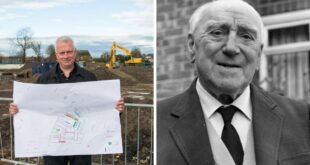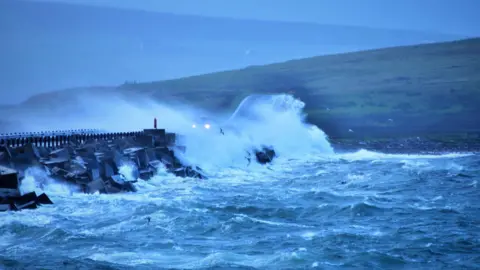 Bruce Flett
Bruce FlettLockable gates are to be installed on a causeway in Orkney in a bid to free up police officers in stormy weather.
The gates will be put in place at both ends of the second causeway on the Churchill Barriers to prevent vehicles from crossing.
In the past a police officer would block the barrier with their vehicle in extreme weather conditions.
The gates are expected to be put in place by the end of the year, but the decision has been widely criticised by local people and businesses.
What are the Churchill Barriers?
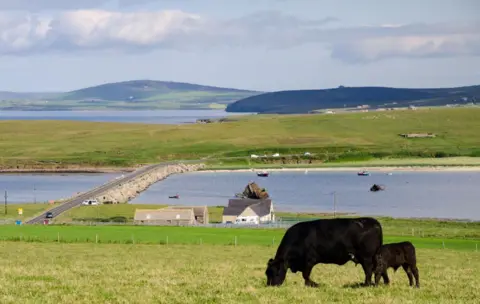 Getty Images
Getty ImagesThe causeways, built during World War Two, were originally used to block U-boat entry into Scapa Flow following the sinking of the Royal Oak battleship in 1939.
Over the years, the barriers have become vital transport links to the Orkney mainland for communities in the islands of Burray and South Ronaldsay.
The decision to install gates on the causeway linking the uninhabited islands of Lamb Holm and Glimps Holm follows a review of existing procedures by Police Scotland, Orkney Islands Council and HM Coastguard.
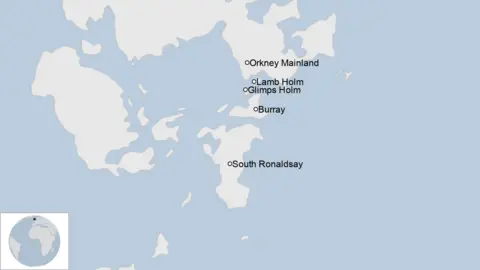
How will the Churchill Barriers gates work?
Only the police have the authority to close the road on safety grounds, but they say they do not have enough resources to man the barriers in those circumstances.
Last year the barrier was shut 19 times.
Under the new plan, the newly-installed gates will be shut by council staff on the instruction of the police.
They will not remain at the barrier and police will decide when the the gates reopen, following an improvement in weather or tidal conditions.
Local people have raised concerns about access to the islands for emergency services when the gates are locked.
Meanwhile Pentland Ferries said they were “extremely disappointed” and accused the decision-makers of a “lack of respect” for the community.
“This decision has been taken without due consultation with the community, local businesses or community council,” a spokesperson said.
“While we appreciate the move to locked gates as a method of closure, may not adjust the current assessment method or closure frequency, to enforce such a change without consultation or attempt to answer our inevitable questions demonstrates not only a lack of respect for the community, but also shows that there is no intent to work collaboratively with the communities and businesses directly affected.
“Transport links are vital to sustaining, strengthening and growing our rural communities, so we are very worried as to how locked gates might be perceived and what impact this could have on the community and its businesses.”
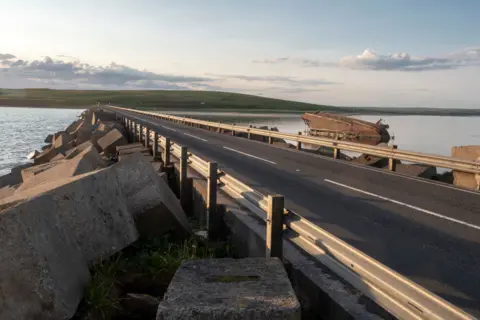 Getty Images
Getty ImagesHowever Hayley Green, the corporate director for neighbourhood services and infrastructure for the Orkney Islands Council, said the gates would make “very little difference” for residents.
Emergency services will be given a key to the gate, but if the vehicle decides to cross the barrier when the road is closed, it will be at their own risk.
Mrs Green said: “As has always been the case, should there need to be a medical evacuation, then we have helicopters, we have the RNLI and those resources will be brought in to place as they always have been.
“So again there is no difference.
“I do think people need to be aware that the decision is not taken lightly. Nobody wants to close that road. It’s only taken when the decision is that the conditions are particularly unsafe.”
Ch Insp Scott Robertson said deploying a police officer to stand at the barrier was not the best use of resources.
“Times change and we’ve got to move with the changes,” he said. “This means both Hailey and myself can redeploy resources and put them to other use until the review time.
“I hope that the residents will understand they’re actually getting more from the council and police in that regard.”
Source link




